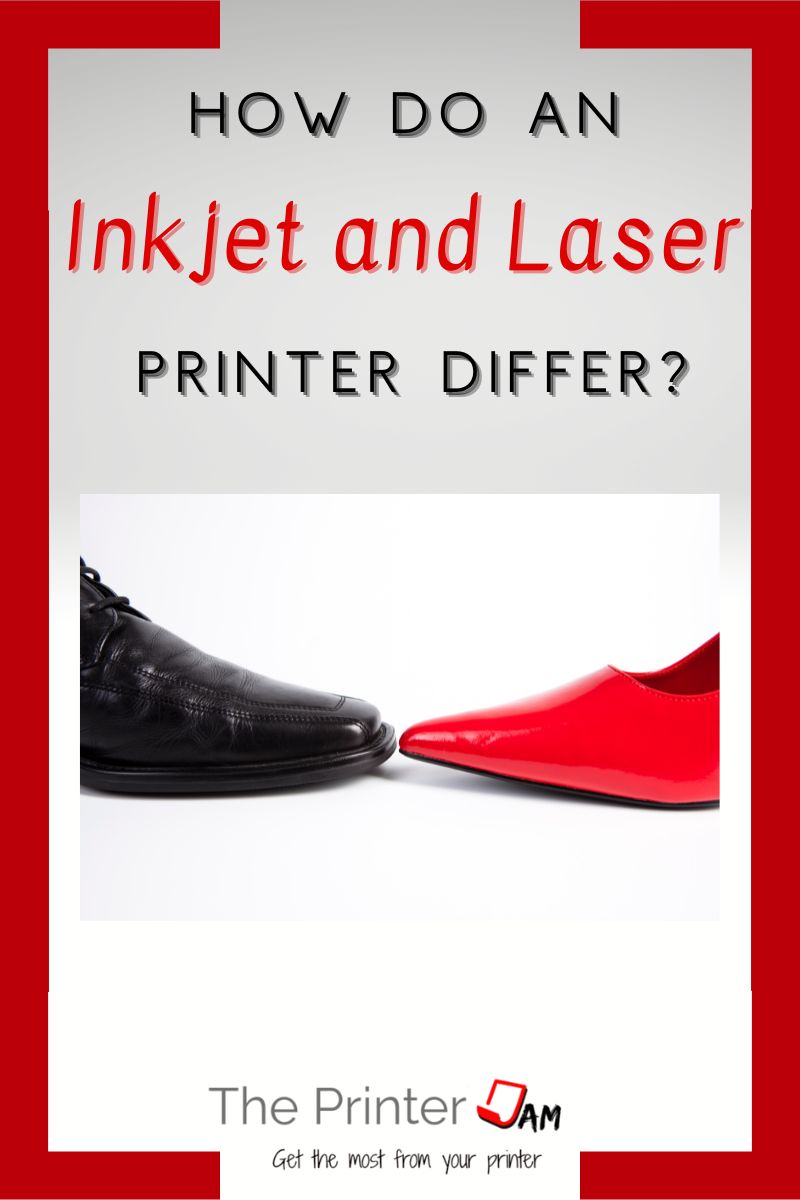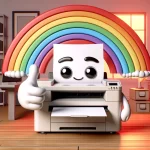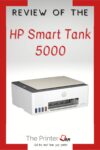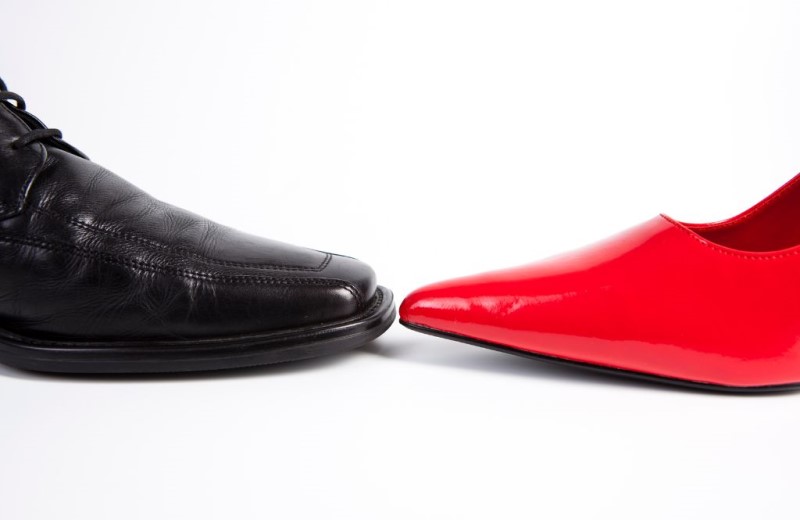
From the outside, inkjet and laser printers don’t look much different. They’re box shaped, use paper, connect via wired or wireless. Both use a printer driver, print in color or B&W. Each type of printer considered computer peripherals.
However, on the inside inkjet and laser printer are very different. The primary difference between inkjet and laser printers is how they apply pigments onto paper.
Inkjet printers spray a fine mist of ink directly onto the paper. While laser printers use static electrical charges to move toner onto a drum then transfer that image to the paper. Lastly heat and pressure is used to melt the powder into the paper.
Each type of printer has advantages and disadvantages. Laser printers are preferred by businesses in my experience. While the differences in cost make inkjet printers more appealing for home use. Though I have seen cases where laser printers are good for home use and businesses use inkjet printers.
| Inkjet Printer | Laser Printer |
|---|---|
| Inkjet printers use ink | Laser printers use toner |
| Inkjet printers are slow (average between 5 to 15 pages per minute) | Laser printers are fast (average between 20 to 35 pages per minute) |
| Inkjet printers can’t handle print volumes of much more than 1,000 pages per month | Laser printers can handle print volumes of much more than 1,000 pages per month |
| Ink cartridges amount to $5,000 to $7,000 a gallon (average 8 to15 cents a page) | Toner cartridges amount to $2,500 to $3,500 a gallon (average 5 to 8 cents a page) |
| Inkjet printers produce great color photos | Laser printers produce great text and sharp lines |
Ink and Toner Differences
Both inkjet and laser printers use subtractive colors to print. Ink and toner use the same pigments for cyan, magenta, yellow, and black. These pigments start as a powder.
Plastic, wax, and resin are ground into a fine powder with the pigments to make toner. While the liquids such as varnish, solvents, wax, and resin are mixed with the pigments to make ink.
Ink being a fluid naturally mixes more than toner. Which gives inkjet printers a larger color gamut but also less defined edges. Color gradients look great but text seems fuzzy on an inkjet printer. If you need to print color photos an inkjet printer has the advantage over a laser printer.
Toner doesn’t have any surface tension or fluid dynamics to help mix colors. It’s actually kept stationary due to static electrical charges. Which isn’t great for color depth. However, since toner remains stationary, it forms sharp, well defined edges and lines.
Since inkjet printers are more direct the image has better print quality. Laser printers move the image from one place to another then physically press it into the paper. They just aren’t capable of the same fidelity as an inkjet printer in my experience.
Cost Differences
The initial cost of an inkjet printer is inexpensive compared to a laser printer. However, the cost per page of a laser printer is less than an inkjet printer.
The total cost of ownership varies by print volume. This graph illustrates how inkjet and laser printer costs differ:
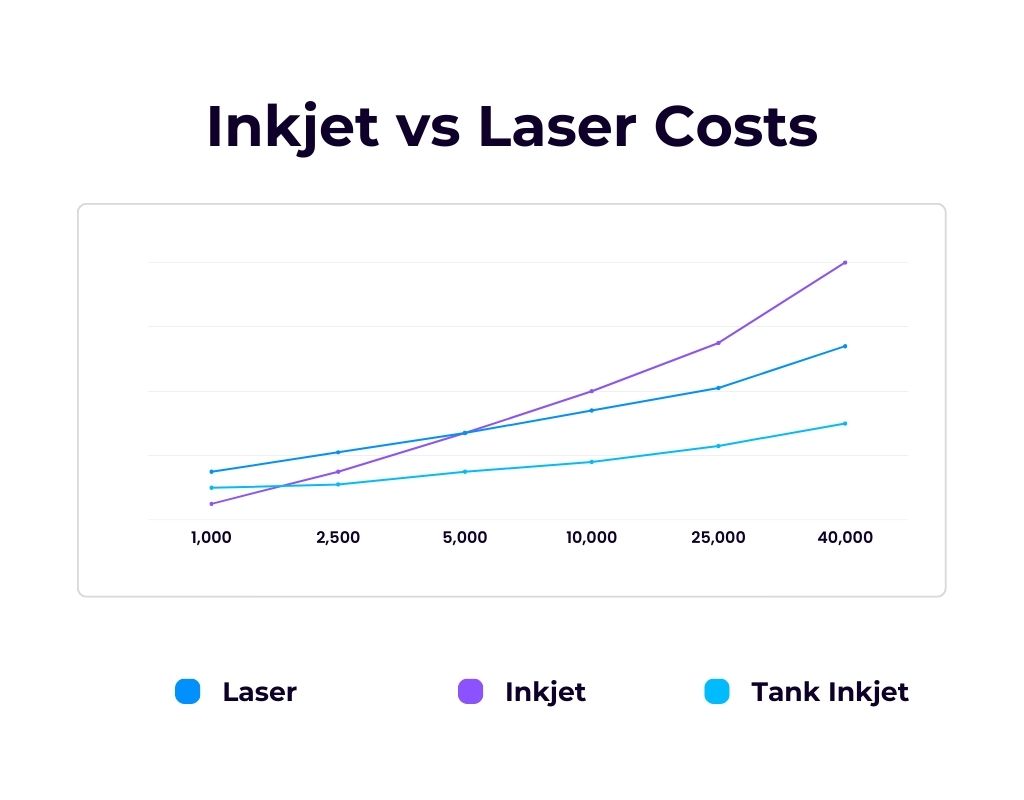
Cartridge based inkjet printers cost the least to begin but are the most expensive in the long run. Laser printers were the cheapest option until ink tank printers came along.
Ink tank printers are clearly the winner when it comes to total cost of ownership. They are much cheaper than a laser printer. However, they are much slower and don’t have the same monthly duty cycles as laser printers.
Ink tank printers have the same or better print quality as cartridge based inkjets. I get the impression manufacturers begrudgingly make them since they make them so slow, with fewer features, and don’t promote them much. Well, at least Epson promotes their Ecotanks.
If an ink tank printer were capable of high duty cycles and inexpensive cost per page I’m sure more businesses would choose them. They don’t have any allegiance to laser printers. Ink tank printers are close but just aren’t there yet.
Cost per page doesn’t mean squat if you’re only printing a few hundred pages per month at home. The initial price is seems to outweigh everything else.
Once there’s a demand to print 1,000 pages per month. Then the exorbitant costs of cartridge based inkjet printers becomes obvious. Which is why many businesses opt for laser printers.
Pros and Cons of a Laser Printer
The biggest advantage of a laser printer is speed and low operating costs. A common speed for laser printers I’ve seen is between 20 to 60 ppm. Although I have worked on expensive printers capable of 150 ppm. The fastest inkjet printer I’ve worked on was only 25 pages per minute.
Laser printers are good for text, color graphs, or charts. I’ve seen laser printers make great color images too. They just employ certain tricks such as well defined color transitions or breaking up gradients into small areas. Text Text art, logos, or certain graphics turn out pretty good on laser printers.
While text and solid black colors are better from the test pages I see from laser printers. That isn’t the reason people use laser printers. There just isn’t an inkjet printer that can handle 5,000 pages per month. At those print volumes the only option is a laser printer.
Pros and Cons of an Inkjet Printer
Inkjet printers produce great color prints compared to laser printers. They have more color depth and details compared to laser printers.
Inkjet printers can also use a wider variety of paper than laser printers. Such as different coatings and paper weight. An inkjet printer does not use heat so they can use photo paper. They spray ink on top of the paper so they can use heavier paper than a laser printer.
An inkjet printer is priced much lower than a laser printer. Ink cartridges cost much less than toner cartridges too. However, ink cartridges don’t last as long and will add up to more after a few thousand pages.
While the print quality is superb, their initial price is what draws most home users to them. Spending $500 for a laser printer then another $400 on toner cartridges after the starter ones run out doesn’t give anyone warm and fuzzy feeling about owning a printer.
Summary
Even though both types of printers use printer drivers, wall voltage, similar paper and pigments they use different printing processes. Differences in printing processes lead to differences in printing costs, duty cycles, speed, and print quality.
Inkjet printers are appealing for home use due to their initial cost and versatility. They’re good for low volume photo printing or low volume printing in general.
Laser printers are appealing for business use due to their speed and low cost per page. They’re good for higher volume printing of text, charts, graphs, and logos.
Their intended purpose is the biggest difference between inkjet and laser printers.
FAQ
In terms of print quality, no. In terms of print volume, yes.
Someone would choose a laser printer over an inkjet printer if they printed 10,000 pages per month. Inkjet printers are not capable of printing much more than 1,000 pages per month.
Inkjet printers just aren’t made to handle large volumes of printing.
If you don’t need to print photos and commit to keeping it for 4 or 5 years. Then a laser printer is worth getting for home use.

The Copier Guy, aka Dave. I’ve worked on scanners, printers, copiers, and faxes since 1994. When I’m not fixing them I’m writing about them. Although, I’m probably better at fixing them. I’ve worked with every major brand. As well as several types of processes. If it uses paper I’ve probably worked on one.
